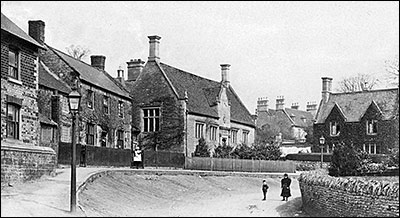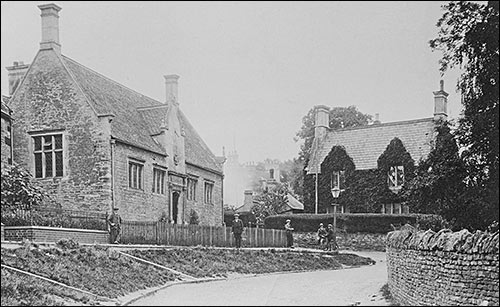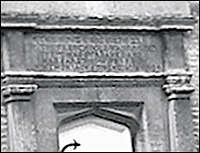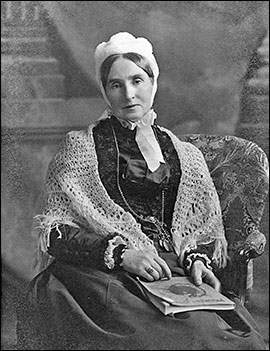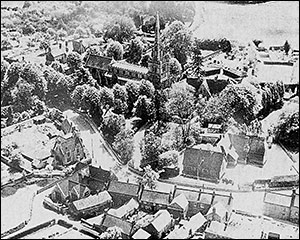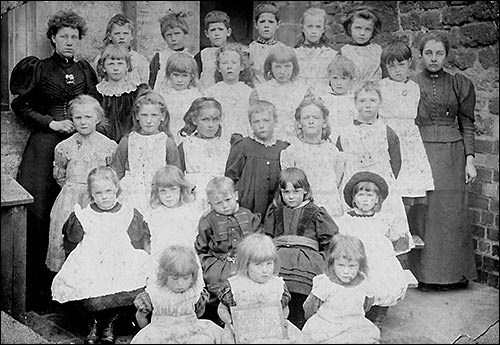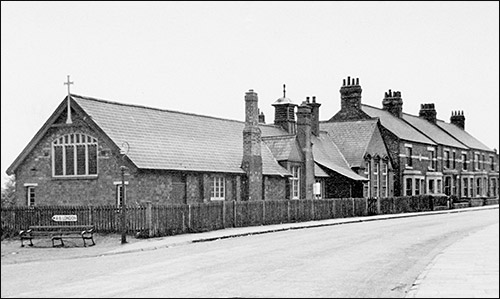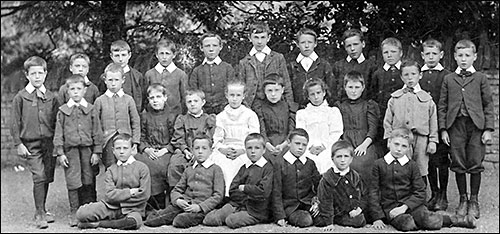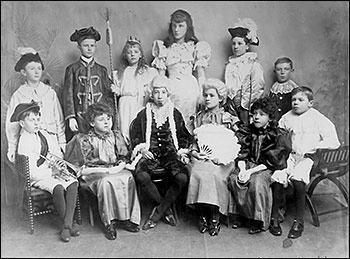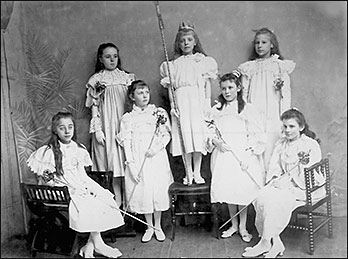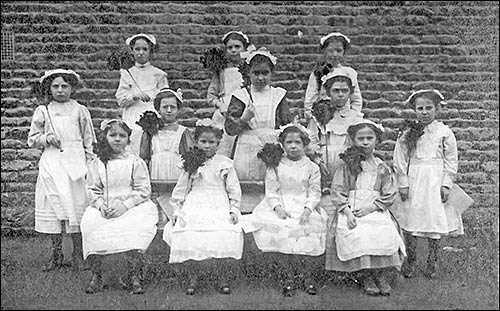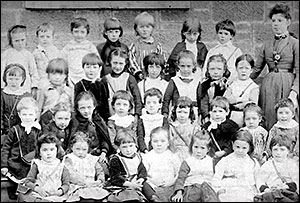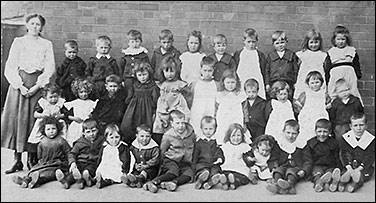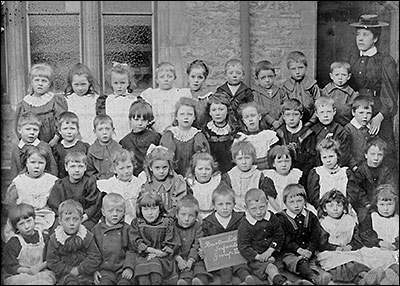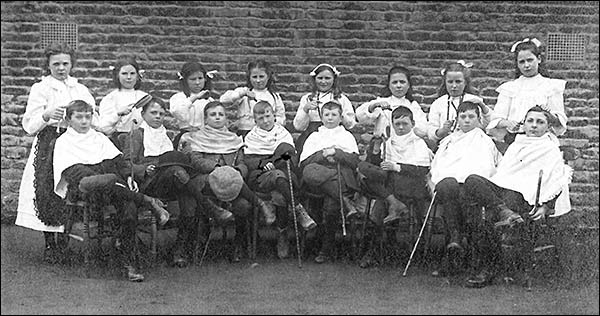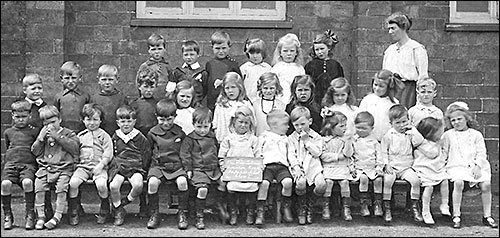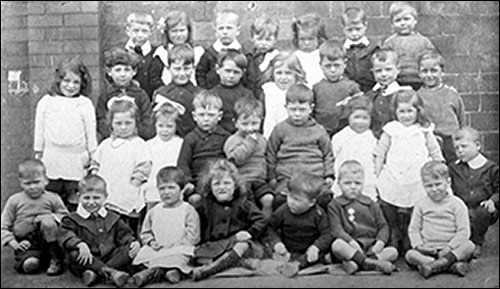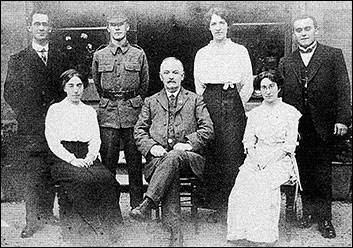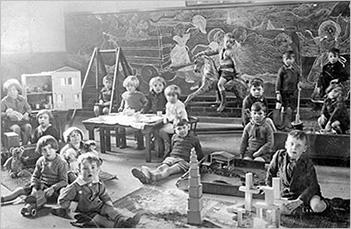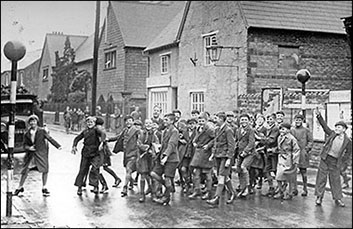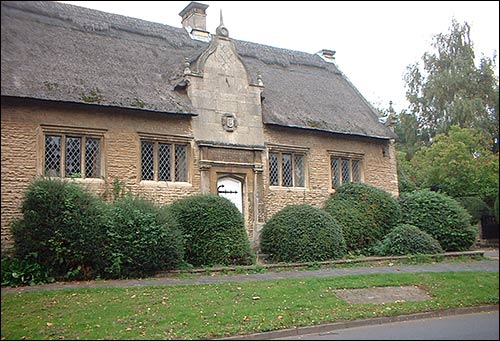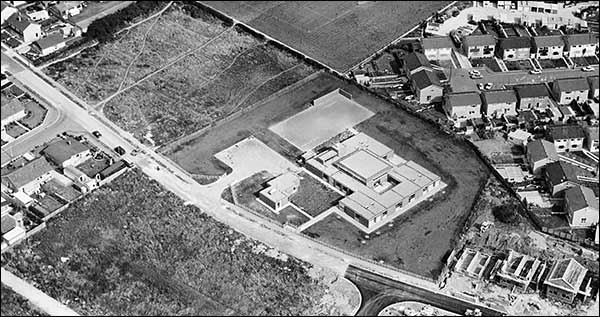| Article by Margaret Craddock (1978, amended 2005) | |||||||||||||||||||||||||||||||||||||||||||||||||||||
|
|||||||||||||||||||||||||||||||||||||||||||||||||||||
|
|||||||||||||||||||||||||||||||||||||||||||||||||||||
|
The first record of teaching in Burton Latimer is found in the Parish Church Registers for 1596 and 1602 as the following extracts show: “That the firste day of Aprill Everard Pie began to teach children in Burton Free Schoole and there taught as hushyer sixe years and a half.” Note: Hushyer – a subordinate teacher or assistant in a school. “Humfrey Stevens, Master of Artes began to teach children in the Chancell of Burton the 30th day of September 1602 and Everard Pie being hushyer to the said Humfrey began then also to teach with him. The said Everard had taughte as hushyer of the Free Schoole there six yeares and a a half than last before.” Burton Latimer was one of the first villages to possess a Grammar School. The school was endowed with £47 per annum arising from 10 acres of land and a house left in 1589 by Elizabeth Margaret Burbank, and an annuity of £7 under a decree of the court of chancery. Margaret Burbank settled lands to the use of a schoolmaster to teach a free grammar school. A schoolhouse was conveyed to trustees by deed of 21 June 1588 by William Vaux, Lord Harrowden and George, his son. An annuity was payable to the schoolmaster out of a farm at Burton Leonard and the school also received the rent of seven cottages, which were formerly the poor house belonging to Scott’s Charity, founded by William and Agnes Scott about 1514. The school was built in 1622 to teach boys Latin and Greek. The architecture is comparable with that of Grammar Schools of a similar period at Uppingham, Oundle and Oakham, all of which grew into Public Schools.
The school, which was erected in 1622, is situated to the NW of the Church and is a rectangular seventeenth century building of Weldon ragstone. It consisted of one room measuring 44’ x16’. It had a fine oak roof of five bays. The front to the road has four mullioned windows and a good central doorway, above which is a curved gable breaking the roof-line and containing a panel inscribed (see below):
Over each of the windows is an inscription as follows:
Note: The figures and letters at the beginnings and ends of lines are dates and initials ie 1622 twice, and W.N.) The larger three light end windows have the middle light heightened. The school commenced as a
Appendix B gives a list of Charities connected with the schools and the village in the year 1849. This is taken from “Whelans Directory of Northamptonshire” and states that “There are few rural parishes can boast of so many important charities.” Apparently little change took place in education in the village until 1862 when a room 44’ x 16’ was constructed on his own private property by the Rev D B Bevan for the purpose of holding cottage lectures and a Sunday School. This was later removed to make a new burial ground and the school concerned was transferred to the Rectory grounds where it was known as the ‘Orchard Room’. This, which was described as a Girls’ and Infants’ School, together with the Free School, was sufficient for those attending school as there was no compulsory attendance.
Elementary Education Act 1870 This Act provided for school boards to be set up in areas which were short of schools. The Education Department had the task of causing boards to be formed where necessary. There was a compromise on the religious issue. The right of withdrawal from religious instruction on grounds of conscience in all public elementary schools, including those run by churches was guaranteed. The most important amendment accepted by the Government was the famous Cowper-Temple clause which laid down that in schools – ‘hereafter established by means of local rates, no catechism or religious formulary which is distinctive to any particular denomination shall be taught.’ Voluntary schools received a 50% grant from the Education Department but building grants came to an end. The school boards were empowered to raise a rate in order to finance their activities. School fees were not abolished. Compulsory attendance from 5 to 13 was a matter for local option. This Act appeared to have little immediate effect in the village. According to the Education Code of 1871 “8 sq ft is to be provided for each child in average attendance,” and this at once condemned the two rooms in use as hopelessly insufficient for the growing parish. In 1873, to meet the needs of the case, the trustees added another room, classroom and lobbies to the old school at a cost of £500 using some adjoining land acquired by the Rector, the Education Department allowing the use of Mr Bevan’s room for a while longer.
In 1876, the Duke of Buccleuch donated a site for a proposed infant school and this was constructed in 1878 at a cost of £800. The headmistress, Mary Ann Stalker, was the wife of the
The In 1890 the function of the two schools changed in that the old Free Grammar school was used as an Infant School, whilst the purpose-built Infant School, opposite, was doubled in space at a cost of £1,226 – additional land being acquired from the adjoining Manor House property – to become the Mixed Boys and Girls School. A quote from this time reads, “Few village schools, certainly none in the neighbourhood could compare with it for healthiness of situation and completeness of its fittings.” High grants obtained by Mr and Mrs Stalker enabled trustees to put aside a certain portion of the endowment for several years towards additions and improvements. Much of the above information was obtained from a “Report – A Thirty Years’ Retrospect” by the then Rector of the parish, F B Newman, dated 1895, and was obviously intended as propaganda against the threat of Board schools which was about to erupt at this time. This final paragraph from the document shows the current line being taken by the Church in the village: “It has been uphill work to find the money for so much building in addition to the funds for maintaining the schools in a high state of efficiency. But it is considered that no great difficulty will be experienced when the debt is paid off and when the Voluntary Schools throughout the country get what they ought to have, and will certainly very soon, obtain viz further assistance from the State: for it cannot longer be tolerated that these Voluntary Schools, which have done all the educational work in bygone times, and which are now educating by far the greater number of children in the country districts, should be placed in a worse position as regards funds, than the Board schools which we see rising on all sides of us. “It is a satisfaction to think that the long-endured hardship of those who have both to maintain their own schools, and in addition to pay rates in support of the Board schools, is doomed, and that a more equitable condition of things is in contemplation and may reasonably be expected to find its way into the statute book in the near future.” The denominational tension, which was a feature of the Cross Report of 1888, was certainly to the fore in the education conflict in the village for the next 10 years. The conflict between the Church party in education and those who supported non-denominational schools was a feature of School Board politics, and at the national level came to divide the Unionists and the Liberals. The supporters of the Voluntary Schools accused the School Boards of extravagance but were themselves obliged to spend more and more on their own schools to keep up with their rivals.
Newspaper reports of 1898 cite the fact that the provision of schools by the Church in latter years was excessive and was an obvious attempt to dominate elementary education in the parish. The Education Department gave a definite pledge in 1893 that the Board should have first right to supply a deficiency but in fact supported the Church. In fact the Department of Education approved the building of a new
The new
Meanwhile, the controversy continued over the proposed A newspaper article from the Kettering Leader and Observer dated 22 July 1898 states:
In July 1898, the memorial stones were laid in anticipation of the building in the High Street of the new undenominational schools at a cost of £2,500 to accommodate 300 children. This followed the canvass taken by the School Board and submitted to the Educational Department showing a large majority in favour of a
Early in 1899, five Church Managers and five Nonconformist Managers drew up an Agreement for the next five years after both the new schools had been officially recognised by the Education Department. (see Appendix D) This seemed to bring to an end the current controversy regarding the dual system of education, with the exception of continuing antagonism between Church and Nonconformists. This item dated July 1899 from the Managers’ Minutes refers to the Chapel school (presumably meaning the
“The Rector reported that two families had removed their children to the Chapel school during the week but one had returned. He also reported that Dunkley, the School Attendance Officer, was the primary cause of removal in one of these cases. That Dunkley’s sympathies were antagonistic to the Church Schools and that he – a Public Officer – ought to be strictly impartial. The Rector suggested (if the law permitted) that the Clerk of the School Board be requested to provide the Managers with forms for irregular attendance and that he be instructed to tell Dunkley not to put foot on the school premises. It was decided to take advice on the matter which is an extremely serious one for the school.”
The Education Bill 1902 The following reasons are listed in the Parish Magazine for July 1902 under the Reasons for Passing the Education Bill. 1. Because the Bill is an honest endeavour to regulate and improve national education in all the branches – primary, secondary, and technical – so as to avert the great danger of England being beaten out of the field of trade by foreign nations. 2. Because it puts an end to divided authority and gives control of all schools to the direct representatives of the ratepayers, chosen by popular election, and working through committees on which the presence of experienced friends of education is secured. (Clauses 1 and 12) 3. Because it enables the County and Borough Councils to improve Elementary schools all round, provide the best appliances where they are now lacking, secure the supply of trained teachers, and help the children to get technical and higher education (Clauses 2 and 8) 4. Because it gives fair treatment to the Voluntary Schools, which have educated more than half the children in the country without hitherto costing the rates one penny. 5. Because it introduces the element of public control into Voluntary Schools by giving the local Councils power to inspect and to audit, and to appoint one-third of the managers. (Clause 8) Our opponents have for years been grumbling that there has been no public control of Elementary Schools. This Education Bill provides for such control. 6. Because it enables all Voluntary Schools – Church, Wesleyan, Roman, etc to continue to provide the religious instruction desired by the parent, while protecting by the conscience clause those who do not desire such instruction. 7. Because the only alternative is to allow the Voluntary Schools to be starved out by the School Boards at the cost of the rates, entailing an expenditure of millions to supply their place.
In 1903 the first Foundation Managers were appointed for the Endowed Schools by order of the Board of Education, when the Rector and three members of the then Managers were selected. In 1908 the Church Managers reported that they received notice of the intention of the County Council to build a new council school for 180 infants, adjoining the
In 1915 there is reference to a letter from the LEA regarding the closing of the Finedon Road Infants School, presumably due to lack of pupils (according to the figures from the registers, this was a constant threat). The school managers resolved to keep the school open on account of the distance infants would have to walk to another school. They decided that economy could be effected by reducing staff. This school did, in fact, cease to exist as an infant school in later years.
The original
The
The The Two new schools, Meadowside Junior and Infants were provided in 1974 and 1976 to the west of the town because of the large increase in the population due to the expansion in recent years. (Click here to read newspaper articles about new school provision.)
Since 1953 all children over the age of 11 have been transported by bus to a choice of Kettering Secondary Schools (formerly decided by the 11+ selection) or more latterly to Barton Seagrave where the purpose-built comprehensive school, Latimer, serves Barton Seagrave and Burton Latimer, as well as those pupils who wish to attend from other parts of the borough. This school welcomed its first pupils in September 1976 and was officially opened by the Duchess of Gloucester on 11 March 1977. Pupils in the 11+ age range from Burton Latimer also have the opportunity to attend other senior schools within the area. |
|||||||||||||||||||||||||||||||||||||||||||||||||||||
